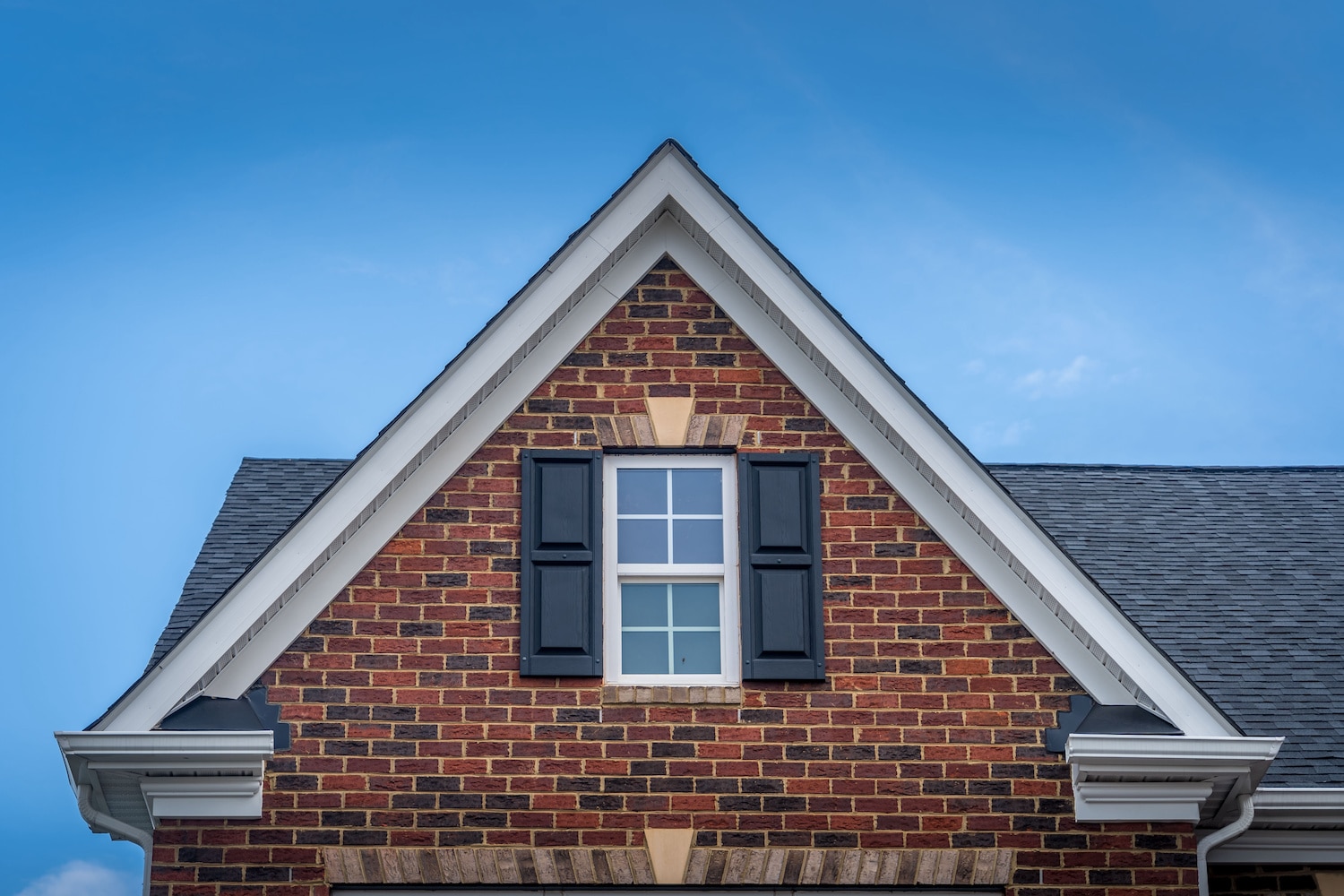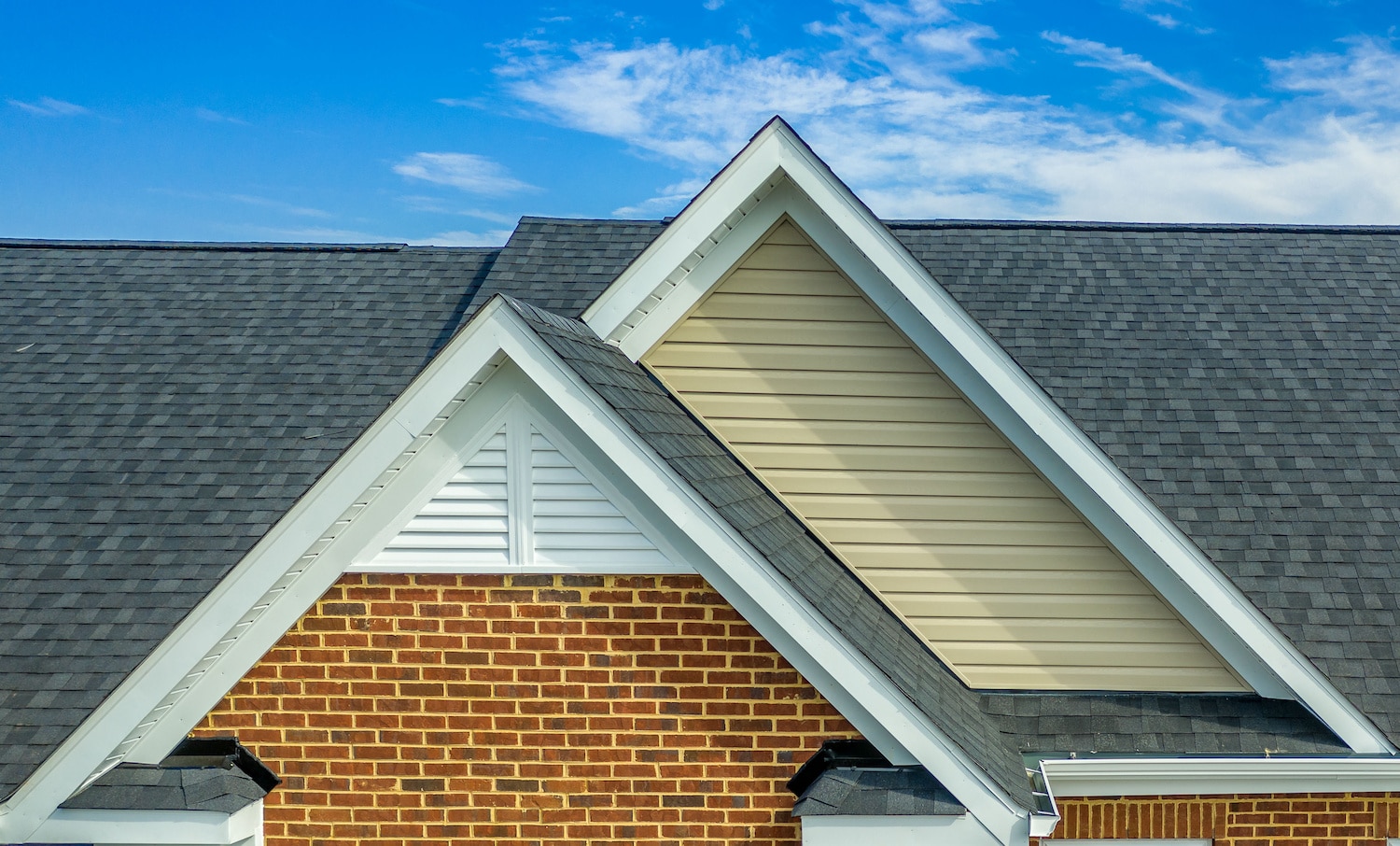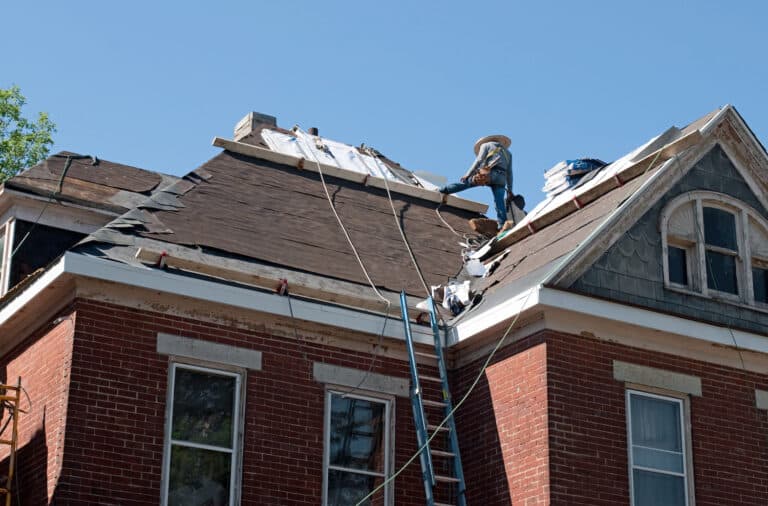What Is the Standard Roof Pitch (+ Pros & Cons of Different Pitches)
There is a mindblowing variety of house designs. Architects go to great lengths to design homes for comfort, style, and aesthetics. However, one of the more commonly overlooked aspects of a house is the roof slope.
The most common roof pitch depends on your location and the type of home you have. Roof pitches have a tremendous impact on homes, what kind of weather they can handle, and the maintenance they need.
This article will dive into the background of what roof slope is, identify the most common roof pitch, and give the pros and cons of the different types of angles.

What is Roof Pitch
The word “pitch” refers to an angle. In the case of common roof pitch, it identifies the angle or slope of the roof. Roofers typically use a couple of methods to determine a roof’s angle. The first is by using degrees, and the second is by using a ratio.
For example, a typical roof pitch might be 4 in 12, which means that for every 4 inches of horizontal distance, the roof rises vertically 12 inches. This pitch is also expressed as a 22.5-degree angle.
Roof pitch is essential for a couple of reasons. The first has to do with aesthetics. A steeper roof is more visually appealing than a flatter roof. The second reason has to do with functionality.
A vertical roof will shed water and snow better than a flatter roof. Depending on the location of your home, a steeper roof might be required based on the weather. Additionally, flat roofs can lead to water damage and should be avoided.
The pitch angle also impacts the type of roofing material you can use. Asphalt shingles, for example, are only rated for use on roofs with a particular minimum pitch. If your roof is too flat, you’ll have to use a different type of roofing material to handle the flatter angle.
What Are the Most Common Roof Pitches for Homes
The most common roof pitch in the United States runs between 2/12 and 12/12. Most homes have a roof pitch that falls somewhere in this range.
There are several reasons for this. The first is that these pitches can handle various weather conditions. The angles are steep yet practical.
Another reason is that these pitches work well with common roofing materials like shingles. Shingles are the most common type of roofing material in the US, and you can only use them on roofs with a specific minimum pitch.
The final reason is that these pitches are relatively easy to construct. They don’t require special techniques or materials; you can build them using standard construction methods.
There are, of course, other types of roof pitches outside of this standard range.

What Are the Most Common Roof Pitches for Commercial Buildings
Commercial buildings also have a typical roof pitch. Most commercial buildings are either 4/12 or 12/12. The limited number of pitches is a result of stricter regulations that govern the construction of commercial buildings.
There are several reasons for this. The first is that these types of roofs can handle various weather conditions. They are steep enough to let snow and rain slide off but not so steep that they are impractical.
Another reason is that these pitches work well with common roofing materials like concrete roof tiles and asphalt shingles. Shingles are the most common type of roofing material in the US.
Benefits of a High Pitch Roof
There are several advantages to having a high pitch roof. This type of roof is most commonly found in locations with severe weather, including snow and rain. The high pitch prevents liquid and moisture from collecting on the top.
Steep slope roofs are standard in cold locations as well. A high pitch roof allows for more insulation in the attic. Additionally, insulation is significant in cold areas.
A standard roof pitch is 12/12. This type of roof can handle a lot of weight without collapsing. Weight-bearing is vital in locations where there is a lot of snowfall. If too much snow collects on a roof, it can collapse.
Finally, steep slope roofs will give you a large crawl space or attic. High roof pitch is helpful for specific home designs.
Disadvantages of a High Pitch Roof
There are also several disadvantages to having a high pitch roof. The first is that this type of roof is more expensive to construct. It is costly because more materials are required, and the construction is more complex.
Another disadvantage is that a high-pitched roof can be more dangerous to work on. It is dangerous because there is a greater risk of falling off the roof.
Finding a contractor willing to work on this type of roof can also be more challenging. Working on a high-pitched roof is more dangerous and requires more specialized training.
Benefits of a Low Pitch Roof
There are several advantages to having a low pitch roof. The first is that this type of roof is less expensive to construct. You can save money because fewer materials are required, and the construction is less complex.
Another advantage is that low slope roofs roof is easier to work on because there is less risk of falling off the roof.
It can also be easier to find a contractor willing to work on this type of roof. Many contractors feel comfortable working on low slope roofs because they are less dangerous and require less specialized training.
Disadvantages of a Low Pitch Roof
There are also several disadvantages to having a low pitch roof. First, this type of roof is more likely to collect water and moisture. Water collection can lead to leaks and other problems.
Another disadvantage is that low slope roofs don’t provide as much insulation. Less insulation can be a problem in locations that experience cold weather.
Finally, a low pitch roof will give you a smaller crawl space/attic. A small crawl space can be a problem for specific home designs.
Wrap Up
To summarize, roof pitch refers to the angle of the roof. A typical roof pitch can be anywhere from 2/12 to 12/12. The roof pitch of a home can vary depending on the architect’s design and environmental considerations.





